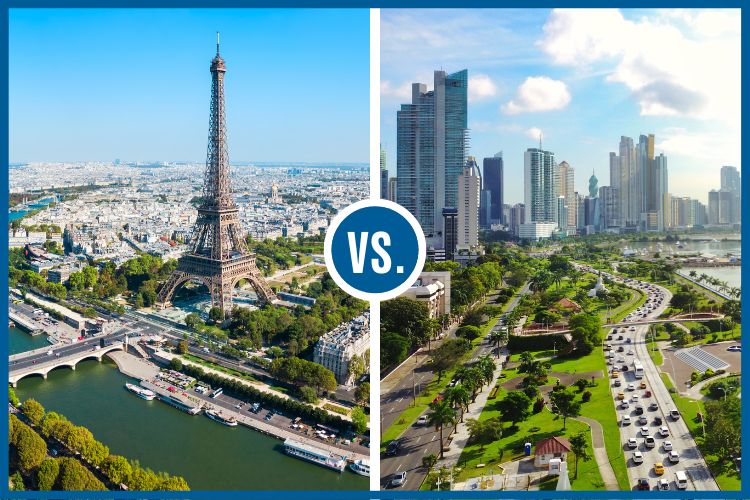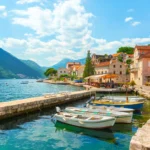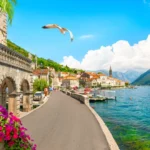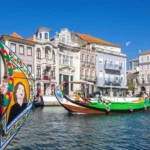Latin America Versus Europe—How To Know Where To Go
We’re gearing up for our Live And Invest In Panama Conference, and it’s got me a little homesick for my one-time home. Frankly, it’s easy to miss Panama when you’re in the depths of a Northern European winter…
But even on a fine sunny day, there’s plenty that I miss about my former home. I lived in Panama for seven years, and I came to love many things about life on this little isthmus…
That said, I moved to France for a reason, and comparing the good and the not-so-lovable about each culture is inevitable—after all, no place is perfect, it’s all a matter of priorities and perspective.
Still debating which side of the pond is right for you? Maybe these pros and cons will help you decide…
The Laid-Back Attitude Of Latin America Versus The Uprightness Of France
After the rigor of France, being in easygoing Latin America feels like a breath of fresh air. No one there is too worried about anything, no one moves fast or demands much from anyone else. And Latinos love kids, which is a boon for my young family.
On the other hand, this often translates into a lack of respect for your fellow people. Whether it’s being late for an appointment or causing a traffic jam because you wanted to have a chat in the middle of the road, you can see how being so relaxed about everything in life can have a negative impact on others. It might be feasible to live this way in a small town, but it doesn’t translate to city living, and you can see this awkward transition from backwater to metropolis playing out in real time in Panama City.
One of my pet peeves in our modern age is people who use their phones with the sound on in public. This happens all over the world, of course, but in Europe, a pointed glare from across the room is enough to shame anyone into hastily silencing their device (in most cases).
In Panama, everywhere I go people are taking calls on speaker, watching loud videos without headphones, or playing games with the volume all the way up… and if anyone notices a glare, they couldn’t care less.
I like that in Europe there are rules and everyone follows them…
Queues form naturally and if someone tries to cut, everyone will point out their mistake. Traffic moves swiftly, even in congestion, because everyone knows how to behave on the road to make sure everyone gets where they need to go in a timely manner. Meeting times are respected. Noise nuisances are rare.
I also like that people respect their environment as much as those in it. No one litters, roads are well maintained, facades regularly repainted, and parking rigorously enforced.
Of course, this also means that Europe is stiff… prim… uptight. People here can be inflexible and overly traditional. And they are quick to point out errors, even to strangers on the street. This can feel like a general attitude of negativity that many comment on after spending time here, especially in Paris.
Modern Fusion Food Versus Traditional, “Historically Good” Cuisine
It’s hard to scorn French food, but if there’s one word you’d have to apply to it, it’d be Traditional, with a capital T. Innovation isn’t high on the list of things the French value, and while I love the consistency and dependability of a Parisian brasserie, I feel like a bit of a rube when I visit other places with more inventive takes on my old favorites.
Chefs in Latin America are all about pushing the boundaries and experimenting with local flavors, often blending them into classic recipes for a delightful, surprising burst of flavor that you weren’t expecting.
Chefs on this side of the pond often train abroad and gain work experience in other countries, then bring all that skill to bear back home. I met one such Panamanian chef who’s worked in one of the official Best Restaurants in the World in Manhattan before returning to work at Lo Que Hay, which made this year’s list of 50 Best Restaurants in Latin America, and is the hottest new restaurant in Casco Viejo in Panama.
Unfortunately, they don’t take reservations and when we tried to get in, the place was already packed both times I visited, no chance for a seating. One of the nights in question we wandered over to Tántalo instead, a popular rooftop nightclub and restaurant that my husband and I used to frequent back in the day. We were blown away by the tuna tartare, which featured apple instead of avocado, and played with passionfruit and cilantro instead of relying on the classic soy and sesame flavors.
And I have to admit I enjoy indulging in many of the American imports to Panama that are somewhat less refined, like Taco Bell and Popeyes, that Paris is lacking.
Grocery shopping in Panama is a real pleasure for those of us used to the European style of shopping. In the big, wide-aisled supermarkets with foods imported from all over the world, I feel like a kid in a candy store.
Shopping in France can be difficult and is far more limited in offering. Most stores are small and tough to maneuver in. Foods seem far more basic than the elaborate and exotic foods on sale in Panama.
In Paris, it’s especially hard to find Asian and Latin spices and certain kinds of produce, and when you find them, they are so expensive that it’s much cheaper to just order some Thai or Mexican takeout rather than trying to make it yourself!
Still, there’s something to be said for the reliable old French basics. I love that I know when autumn comes, onion soup is guaranteed on every menu. When things warm up outside, it’s carpaccio and tartars that take center stage. You can predict French menus like you can predict Panamanian weather.
Speaking of…
The Seasons
I love the variety that seasons offer… seasons were one of the things I missed most when living in Panama. I like unpredictability in the weather, and I have become enamored of the cold since going without it for so long.
On the flipside, I find Northern Europe’s daylight hours to be inconvenient at best. We don’t get enough sun in winter (sun rising around 9 a.m. and setting around 4 p.m. at the most extreme), and we have far too much of it in summer (with sun rising before 6 a.m. but not setting until nearly 10 p.m.).
In Panama, I love that the sun rises at about 6:30 a.m. every day no matter the time of year. I’m up with the sun and kick the day off with a bang. When I lived there, I’d take my dog out for a run before the sun got too hot, hit the gym, go for a quick swim to cool down, make a smoothie with fresh tropical fruits and coconut water, then head to work by 8 a.m.
In Paris, the sun is just beginning to rise by the time I’d be getting to work in Panama… and, to my shame, I’ve usually done nothing of value before it does.
The downside is that the sun also sets before 7 p.m. every day in Panama, which can be a drag when you depend on daylight for motivation. It’s hard to want to go out again after getting back from work in the dark. But I love that it winds me down naturally for the day, and when in Panama, I’m easily asleep by 10 every night and wake up raring to go.
And although I missed seasonal variation, I can’t complain too much about Panama’s climate. With the consistent sunshine you can expect on the equator, you never really need to plan ahead for the weather. Every day is perfect for the pool or the beach—neither of which are ever far—with minor blips of monsoon level rain to add to the spice of life. I had a nice tan for nearly a decade, which was fun.
The Business Culture
This one depends on the location you’re talking about in Latin America, but when it comes to Panama City, there’s a much more modern business mentality than anywhere in Europe…
And this is true of most capital cities south of the border, as well as most other densely populated cities. It’s only in small towns and fishing villages that you’ll encounter the “mañana attitude” that North Americans associate with this part of the world.
When I say business culture, it comes down to things like opening and closing hours, a more consumerist mentality, and even the ability to start or manage a business.
Europe is far less evolved on the topic of anything commercial than anywhere on the other side of the Atlantic. In Europe, businesses don’t typically open until 10 a.m., close for lunch (at least an hour, if not two), and close by 6, 8 at the latest. Few things open on weekends. Laws inevitably favor employees over employers, and the taxes associated with running a business can be prohibitive.
On my last visit to Panama, I was shocked that many businesses open at 7 a.m. and close at 8 p.m. at the earliest. Hours are consistent six days a week, and while you can’t count on things being open on Sunday, it’s becoming more of a norm.
Which Continent Is For You?
This is obviously a subjective question… all of the above-mentioned issues could be a pro or a con… or both… depending on your preferences, priorities, and perspective.
Do you like the idea of an anything-goes culture? Or are you a rule follower by nature? If you like order and calm, then Europe is more your speed. If you like chaos and unpredictability, Latin America will be more your speed.
Do you prefer stability and reliability over spontaneity and experimentation? When it comes to the weather, Latin America is more dependable, but when it comes to maintenance of the status quo, Europe is the winner.
If you like that feeling of off-road discovery and a no-taboos Wild West feeling, it’s Latin America.
If you like walking a well-paved road that’s clean and orderly—both metaphorically and literally—it’s Europe.
And, of course, these are grand generalizations. There are places on both continents that defy all these stereotypes, and places where they are true to varying degrees… I’ve tried to outline the extremes of the spectrum.
Kat Kalashian
Editor, LIOS Confidential







